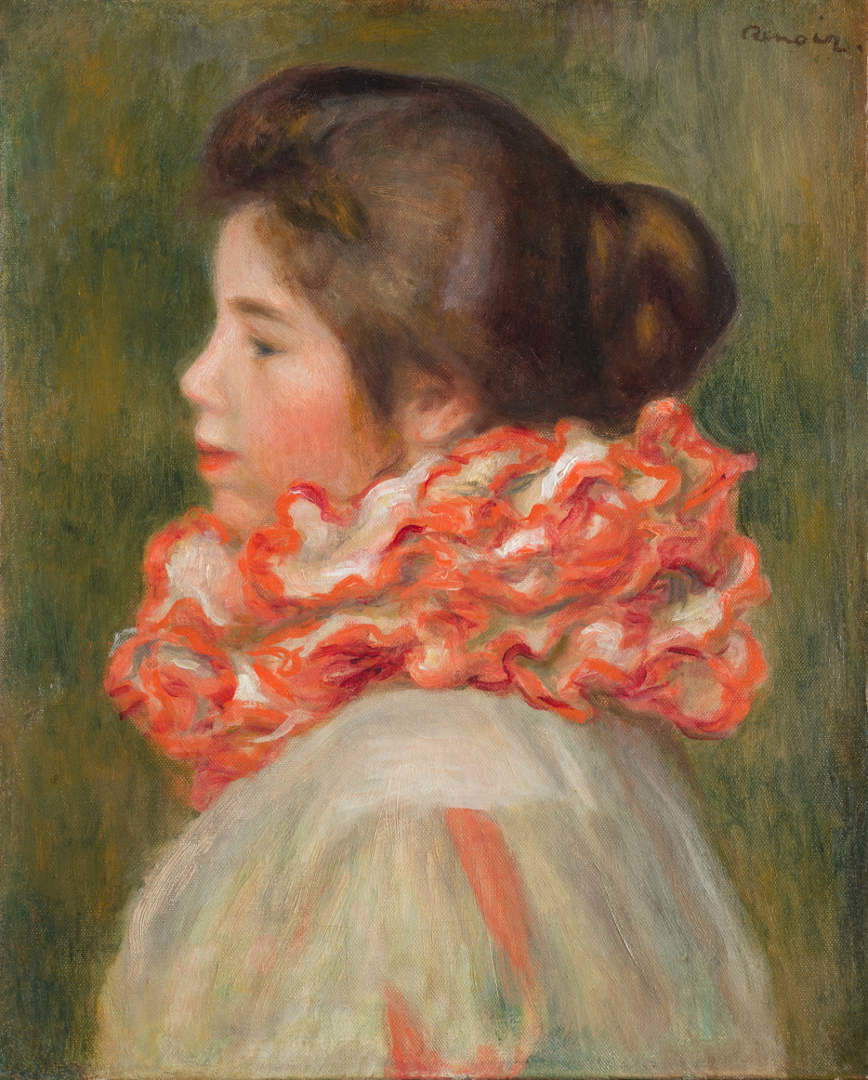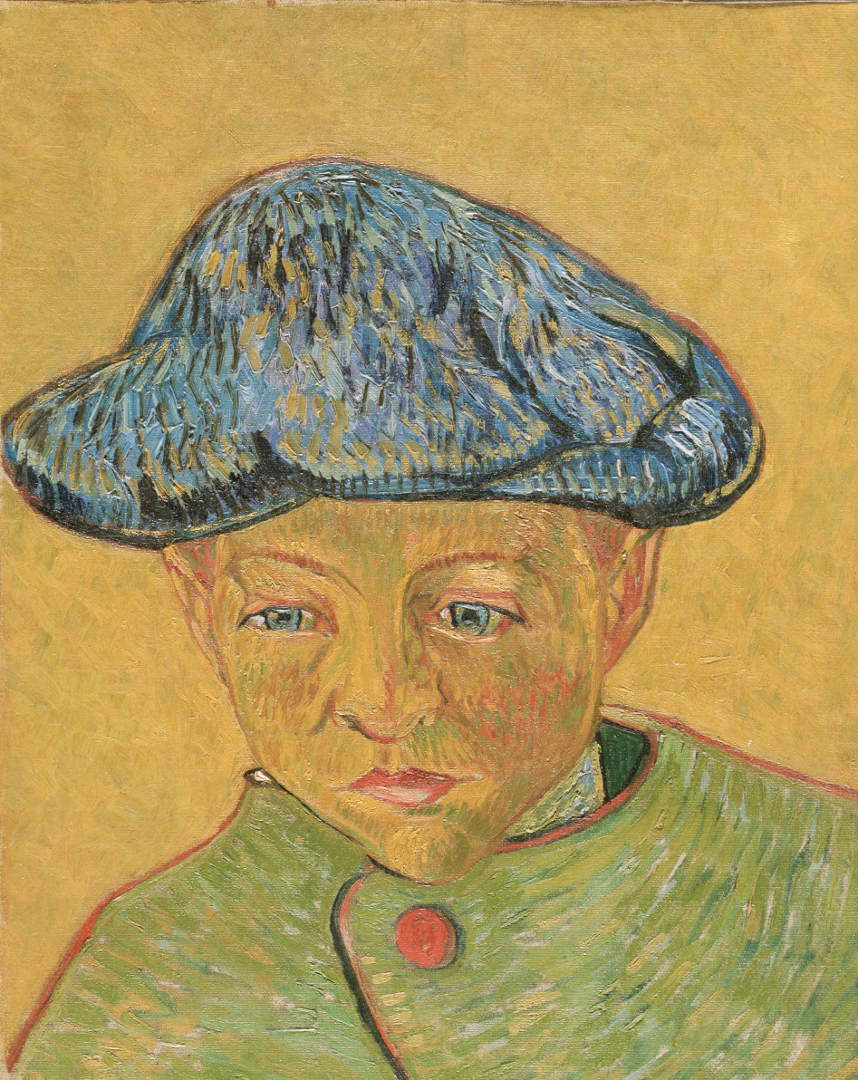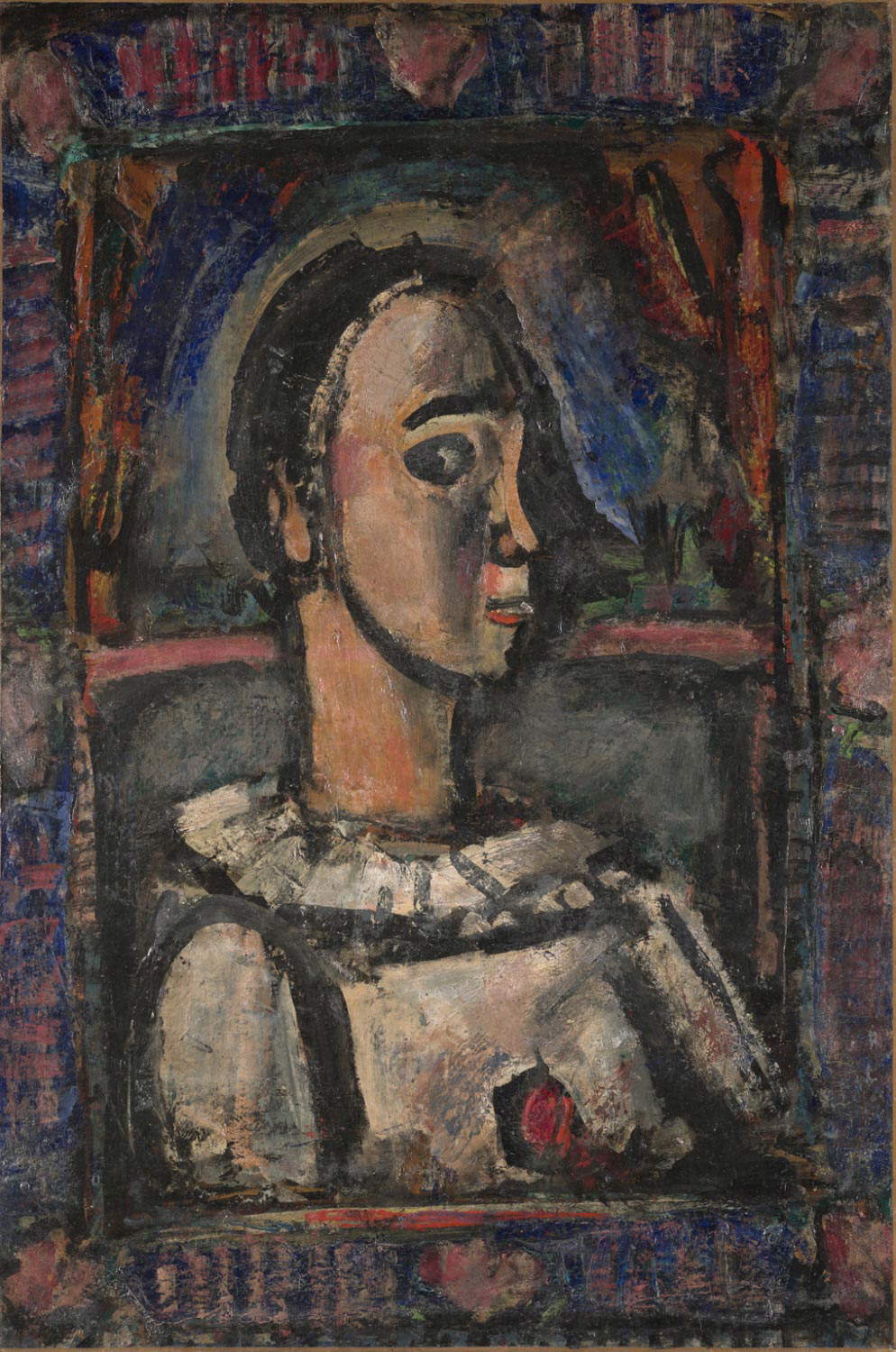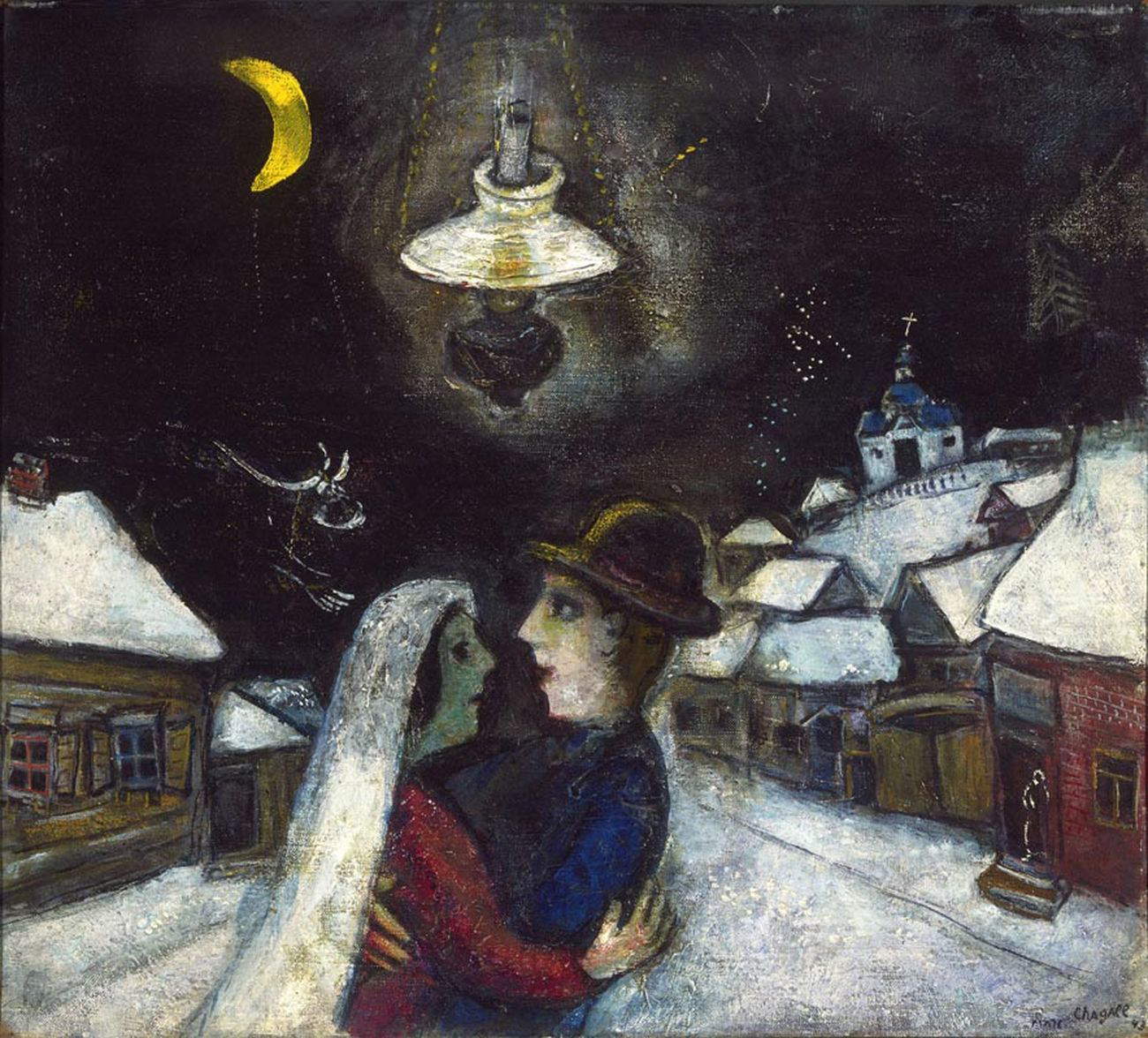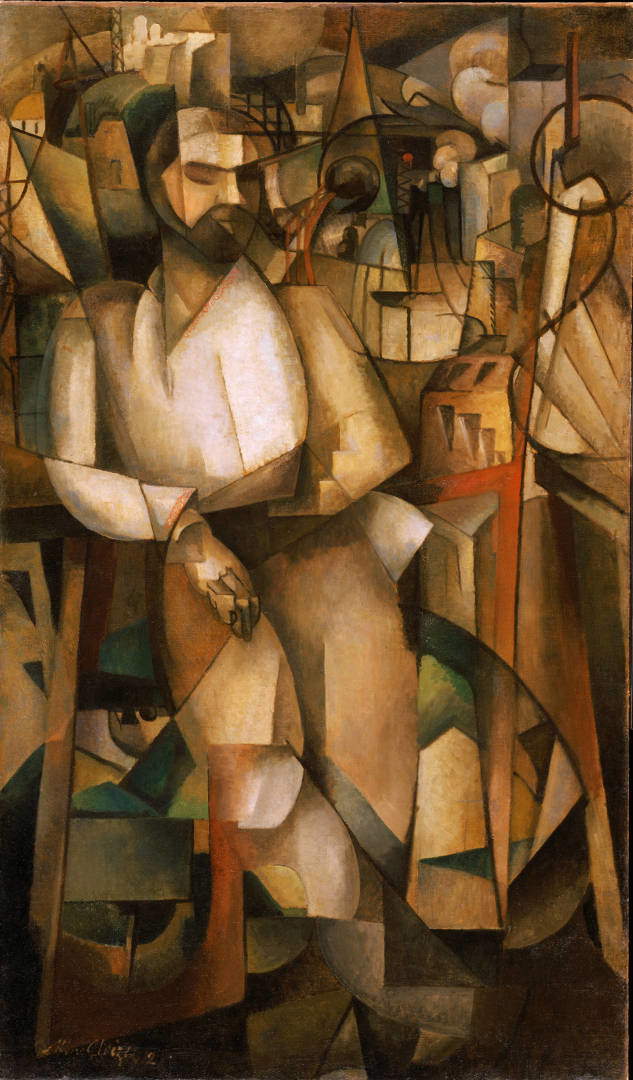by Ilaria Baratta , published on 08/08/2018
Categories: Exhibition reviews
/ Disclaimer
Review of the exhibition 'A History of Great American Collecting. Impressionism and the Avant-Garde. Masterpieces from the Philadelphia Museum of Art', in Milan, Palazzo Reale, from March 8 to September 2, 2018.
The approach with which U.S. curators Jennifer Thompson and Matthew Affron planned to organize the exhibition Impressionism and the Avant-Garde. Masterpieces from the Philadelphia Museum of Art set up at the Palazzo Reale in Milan and which will be open to the public until September 2, 2018 appears, from the very beginning of the exhibition, to be different from the one and only intention of presenting artists belonging to various artistic movements; rather, visitors who will walk through the exhibition rooms will understand step by step how the famous Philadelphia Museum of Art was born and gradually enriched with the great works of art that it still holds today. The public will certainly admire masterpieces by Monet, Manet, Degas, Renoir, Cézanne, Gauguin, Pissarro, Mary Cassatt, Berthe Morisot, Matisse, Klee, Kandinsky, Van Gogh, Picasso, Brâncu�?i, Dalí, and Miró, but with a more defined and contextualized overall view of the works of these artists: indeed, one will come to the conclusion of the course with the knowledge that one has learned the real history of one of the most significant museums in the United States.
The history of the Philadelphia Museum of Art began in the second half of the nineteenth century, specifically in 1877, the year it was opened to the public; in that century the city of Philadelphia was the largest city in North America, flourishing thanks to commerce, transportation, and the culture that had been growing. It was here that the first official U.S. World’s Fair was organized in 1876, and it was an incredible success: more than ten million people visited it, and it was this first fair that gave a great boost to the flow of wealthy Americans to Europe, looking for art to see, learn about, and buy. Considerable interest was sparked in the people of Philadelphia themselves by the Impressionist movement, as can be seen from the collection of works of Impressionism preserved in the American museum: the latter was established thanks to entire collections belonging to wealthy collectors in the city, with which they embellished their marvelous residences; their collections were later donated to the Philadelphia Museum of Art.
First among all who fostered the awareness and dissemination of French Impressionist works in American circles was Alexander Cassatt (Pittsburgh, 1839 - Philadelphia, 1906), a railroad engineer for the Pennsylvania Railroad, the company that operated rail transportation between Philadelphia, New York and Washington, and brother of the famous Mary (Pittsburgh, 1844 - Château de Beaufresne, 1926). Alexander began to take an interest in the French Impressionist movement during a stay in Paris made with his sister: the latter had already become part of the Impressionist milieu, participating in the group exhibitions of those artists, exhibiting at the Salons, and captivating Edgar Degas (Paris, 1834 -1917) with his art. He also managed to collaborate with gallerist Paul Durand Ruel (Paris, 1831 - 1922) to exhibit between Philadelphia and New York a considerable number of Impressionist paintings. Infected by his sister’s enthusiasm, Alexander began his own collection of works belonging toImpressionism in 1882, as well as urging fellow citizens and friends to purchase similar canvases. Works that over time found their way into the permanent collections of the Philadelphia Museum of Art.
Mary Cassatt initiated the purchase of Impressionist canvases for her brother Alexander with a painting by Degas: The Dancing Class that the artist made in about 1880. In keeping with his favorite theme, Degas depicted on the canvas the world of dance, particularly dancers who are practicing in the hall during class hours: some graceful on their toes in their tutus are performing a dance step under the watchful gaze of the teacher, others are preparing for their turn. The female figure in a blue dress and hat sitting in a chair while reading a newspaper underwent a later alteration by the artist himself: according to what was discovered through x-rays, she was a ballerina adjusting a slipper.
Alexander’s Impressionist collection included, of course, works made by his sister, such as the exquisite and accurate painting depicting a Woman with a Pearl Necklace in a Box (1879). It is a canvas that is fascinating for the attention to detail and nuance in the dress, accessories, hairstyle and face, the latter illuminated by artificial light that creates a natural play of light and shadow. Note the refinement of the string of pearls that adorns the woman’s neck and the fan she holds stately in her right hand. Behind the woman one senses the presence of a mirror on which are reflected, in addition to her back figure, other spectators standing in the boxes in front of her. Another artist in the Cassatt collection was Claude Monet (Paris, 1840 - Giverny, 1926), shown here with a painting from about 1874 depicting The Zuiderkerk in Amsterdam, or the so-called Southern Church, the first Protestant church erected in the city, seen from the Groenburgwal, a canal in Amsterdam. We can see in this painting one of the recurring features of Monet’s painting: the reflection of sunlight on water. The latter is rendered with quick, short brushstrokes of different shades of blue, creating an effect of movement of the canal.
 |
| Edgar Degas, The Dancing Class (ca. 1880; oil on canvas, 82.2 x 76.8 cm; Philadelphia, Philadelphia Museum of Art) |
 |
| Mary Cassatt, Woman with Pearl Necklace in a Box (1879; oil on canvas, 81.3 x 59.7 cm; Philadelphia, Philadelphia Museum of Art) |
 |
| Claude Monet, The Zuiderkerk in Amsterdam (ca. 1874; oil on canvas, 54.4 x 65.4 cm; Philadelphia, Philadelphia Museum of Art) |
The next three sections of the Milanese exhibition are devoted to three different themes: it begins by exploring a fundamental aspect of Impressionism, namely how the artists belonging to this artistic movement revolutionized the way of painting by abandoning indoor studios and ateliers in the course of their creative vein to paint en plein air, in the open air, in contact with nature or in the urban landscape. Visitors thus have the sensation of walking along the Sheltered Path in the Parisian suburb of Argenteuil, depicted by Monet in 1873, behind the man walking among trees resplendent in various shades of green from the effect of sunlight - the painting was purchased by Elizabeth Donner Norment, the daughter of a Philadelphia steel magnate, and later donated to the Philadelphia Museum of Art-or to actually stand in front of the Japanese Bridge (1895) in Monet’s Giverny Garden in the canvas purchased by Otto >Haas, owner of a chemical company in Philadelphia. Or even on the Banks of the Loing, a tributary of the Seine, depicted in Alfred Sisley ’s (Paris, 1839 - Moret-sur-Loing, 1899) 1885 painting, as well as in the Winter Landscape depicted by Paul Cézanne (Aix-en-Provence, 1839 - 1906) in Giverny in 1894, during an invitation to the painter by Monet. Set in urban landscapes, on the other hand, are the Fair on a Sunny Afternoon in Dieppe (1901), a painting by Camille Pissarro (Charlotte Amalie, 1830 - Paris, 1903) that is somewhat crowded and gives off the noises, movements and colors of the annual summer fair: Pissarro depicted the square from a room in Dieppe’s Hôteldu Commerce, as a chronic eye infection had made it difficult for him to paint outdoors; the painting was sold by the artist to the Durand-Ruel Gallery and later purchased by collectors to display in their Philadelphia homes. Another example is Pierre-Auguste Renoir ’s (Limoges, 1841 - Cagnes-sur-Mer, 1919) painting, The Grands Boulevards (1875), in which groups of people, some in horse-drawn carriages, stroll along the wide Parisian boulevards among stone buildings interspersed with trees.
The next section examines how the Impressionists made portraits of human figures, generally moved by theimmediacy of the moment. It begins with the Portrait of Madame Cézanne (1885-87): Cézanne decided not to move to Paris, preferring the less chaotic environment of Aix-en-Provence, so family members very often appear among his portraits, as in this case in which he depicted Hortense Fiquet, his wife-she featured in more than forty-four paintings and drawings-probably in the open air, since a few branches of a creeper are glimpsed at the top of the painting. Renoir favored portraying very young girls, with particular attention to the details of the clothing, as in Girl with Red Ruff (c. 1896), in which the viewer’s eye is immediately and inevitably focused on the bright and vaporous ruff that encircles her neck, or in the delicate Girl Making Lace (1906), where an almost shimmering worked fabric is noticeable. Berthe Morisot (Bourges, 1841 - Paris, 1895) also made portraits of very young people; an example in the exhibition is the Portrait of a Little Girl (1894): the latter approached the painter by introducing herself as Marcelle, a little girl; the artist depicted her at least six times, and even when Morisot died, an unfinished portrait of Marcelle was found on her easel.
 |
| Claude Monet, Sheltered Path (1873; oil on canvas, 54.1 x 65.7 cm; Philadelphia, Philadelphia Museum of Art) |
 |
| Claude Monet, The Japanese Bridge (1895; oil on canvas, 78.7 x 97.8 cm; Philadelphia, Philadelphia Museum of Art) |
 |
| Alfred Sisley, Banks of the Loing (1885; oil on canvas, 55.1 x 73.3 cm; Philadelphia, Philadelphia Museum of Art) |
 |
| Paul Cézanne, Winter Landscape (c. 1874; oil on canvas, 65.1 x 81 cm; Philadelphia, Philadelphia Museum of Art) |
 |
| Camille Pissarro, Fair on a Sunny Afternoon, Dieppe (1901; oil on canvas, 73.5 x 92.1 cm; Philadelphia, Philadelphia Museum of Art) |
 |
| Pierre-Auguste Renoir, The Grands Boulevards (1875; oil on canvas, 52.1 x 63.5 cm; Philadelphia, Philadelphia Museum of Art) |
 |
| Pierre-Auguste Renoir, Girl with Red Ruff (c. 1896; oil on canvas, 73.5 x 92.1 cm; Philadelphia, Philadelphia Museum of Art) |
 |
| Pierre-Auguste Renoir, Girl Making Lace (1906; oil on canvas, 56.5 x 46.7 cm; Philadelphia, Philadelphia Museum of Art) |
 |
| Berthe Morisot, Portrait of a Little Girl (1894; oil on canvas, 54.4 x 65.4 cm; Philadelphia, Philadelphia Museum of Art) |
It continues with the section devoted to Vincent Van Gogh (Zundert, 1853 - Auvers-sur-Oise, 1890) and Paul Gauguin (Paris, 1848 - Hiva Oa, 1903): the two lived together in the famous yellow house, a small atelier in the south of France, but the experience did not last long, even leading to an attack by Van Gogh on Gauguin. Present in the Milan exhibition are two still lifes, each belonging to the two artists: Gauguin’s, in muted tones, shows numerous centifolie roses in a basket, while Van Gogh’s, in darker, bolder tones, shows a bouquet of variously colored daisies in a gray and green German beer mug. A portrait is also noticeable in this section: it is Van Gogh’s Portrait of Camille Roulin (1888), son of the letter carrier of Arles. What catches the eye is the artist’s painting, based on complementary colors: the blue of the child’s cap and eyes stands out with the yellow of the face and background, the green of the jacket stands out with the red of the button and the outline of the jacket.
The Philadelphia Museum of Art was also enriched by the White collection: some four hundred works, collected by Samuel Stockton White (1876 - 1952) and his painter wife Vera McEntire, that fully highlighted the transition from postimpressionism to the avant-garde, beginning with a painting by Cézanne that approaches Cubism and the still lifes of Georges Braque (Argenteuil, 1882 - Paris, 1963). Examples of the latter in the exhibition are the Basket of Fish (ca. 1910), in which a pair of fish placed diagonally with faceted shapes in dull brown tones is depicted in the center of the canvas, while only the handle and the lower part of the basket appear sharp; in Still Life with Plate of Fruit (1936) there is a repetition of ornamental marks of various colors that decorate a series of elements typical of a still life, namely a plate of fruit, a wine glass, the head of a newspaper, a pipe, and fruit on a table. By Cézanne, on the other hand, is Le Quartier du Four à Auvers-sur-Oise (Landscape, Auvers) made in about 1873: here the landscape of the small village northwest of Paris takes on almost geometric forms, outlining the angular contours of the houses and surrounding trees with more rounded lines. Present on display in the center of the room is the small bronzeAthlete by Auguste Rodin (Paris, 1840 - Meudon, 1917): the sculpture was completed on the model of Samuel Stockton White’s own, who in 1901 during a stay in Paris posed for the artist because of his body as a bodybuilder, as an "American athlete" (Rodin was fascinated by the broad, muscular back of the Cambridge student, heir to a family business of dental products, who later became one of the great collectors who contributed to the formation of the Philadelphia museum).
Added to the works mentioned so far were paintings by avant-garde artists who had focused on two famous areas of Paris: Montmartre and Montparnasse. The former had welcomed mainly Cubists, such as Pablo Picasso (Malaga, 1881 - Mougins, 1973), Georges Braque and Juan Gris (Madrid, 1887 - Boulogne-sur-Seine, 1927); the latter was the center of theÉcole de Paris, which included artists from all over the world, such as Constantin Brâncu�?i (Hobitza, 1876 - Paris, 1957) from Romania, Chaim Soutine (Smilovi?, 1893 - Paris, 1943) and Marc Chagall (Vitebsk, 1887 - Saint-Paul-de-Vence, 1985) from Russia, both Jews. Also developing in the French city was the fauves group, literally ferocious beasts, so named by a critic who at the 1905 Salon d’Automne was fascinated by the colors used by these artists and theiraggressive and brutal use of line: progenitor of the Fauves was Henri Matisse (Le Cateau-Cambrésis, 1869 - Nice, 1954) accompanied by Maurice de Vlaminck (Paris, 1876 - Rueil-la-Gadelière, 1958), Raoul Dufy (Le Havre, 1877 - Forcalquier, 1953) and Georges Rouault (Paris, 1871- 1958). Very pronounced black lines delineate the outline of Rouault’s Pierrot with Rose (c. 1936): in this painting, the artist links the traditionally unhappy subject to the religious sphere, comparing the mute clown to Christ, the prime example of a sacrifice victim. This connection is highlighted by the red rose that the Pierrot holds, a symbol of the blood of Christ. A work that is on the whole luminous, in which the white of the dress and the glow of the face stand out, but which conceals a religious message, an aspect in line with the artist’s strong Catholicity. A strong luminosity also pervades Dufy ’s painting Window on the Promenade des Anglais in Nice (c. 1938): the center of the window actually bisects the view from his studio on the Promenade des Anglais, as the left side facing the sea appears darker in tone than the right side facing the city, which is brighter and richer in elements, such as the beach, buildings, and passersby.
 |
| Vincent van Gogh, Portrait of Camille Roulin (1888; oil on canvas, 73.5 x 92.1 cm; Philadelphia, Philadelphia Museum of Art) |
 |
| Georges Braque, Still Life with Plate of Fruit (1936; oil on canvas, 60.3 x 81.3 cm; Philadelphia, Philadelphia Museum of Art) |
 |
| Paul Cézanne, Le Quartier du Four à Auvers-sur-Oise (Landscape, Auvers) (c. 1873; oil on canvas, 46.4 x 55.2 cm; Philadelphia, Philadelphia Museum of Art) |
 |
| Auguste Rodin, Athlete (1901, cast 1925; bronze, 42.9 x 31.8 x 28.6 cm; Philadelphia, Philadelphia Museum of Art) |
 |
| Georges Rouault, Pierrot with Rose (c. 1936; oil on paper pasted on linen, 92.7 x 61.8 cm; Philadelphia, Philadelphia Museum of Art) |
 |
| Raoul Dufy, Window on the Promenade des Anglais in Nice (c. 1938; oil on canvas, 46 x 38.3 cm; Philadelphia, Philadelphia Museum of Art) |
A significant figure for the great contribution he made both humanly and artistically to the Philadelphia Museum of Art was lawyer Louis Stern (1886 - 1962), who was originally from Ukraine but moved to the United States at a young age. Stern served for many years as an administrator at the Philadelphia museum and, upon his death, bequeathed to the museum some three hundred works of art, including paintings by Matisse displayed in the exhibition. Woman Seated in Armchair (1920) and Still Life on Table (1925) are examples. The former belongs to a series of works in which the protagonists are women posing at the Hôtelde la Mediterranée in Nice, where the painter stayed for some time between the 1910s and 1920s. The woman is seated comfortably on a yellow armchair and looks as if she has just returned to her hotel room: she is barefoot, her shoes are on the floor next to the armchair, and her cap is resting on the back of the armchair to her left.
The female figure in the center is surrounded by tapestries with floral ornaments on the floor and walls, which refer to the vase of flowers placed behind her. The second canvas has fewer ornaments than the previous one, visible only on the screen and the ceramic cup and saucer. The painting is part of the compositions of still lifes on tables covered with multicolored tablecloths made in 1924 and 1925: the colors of the different elements placed on the table create an overall harmony on the canvas; the yellow of the lemons, the red-violet of the plums, the green of the vase, the anemones of various colors inside the latter, and the pink of the tablecloth are in perfect harmony.
Stern, as a great collector, compared works of modern painting with archaeological objects from different continents to find in them a common expressive essentiality; he was fascinated by the works of the customs officer Henri Rousseau (Laval, 1844 - Paris, 1910), whose painting A Carnival Evening (1886) is shown in the exhibition. A mysterious atmosphere hovers in the latter: a man and a woman in carnival attire are depicted with an incredible luminosity, standing out against the dark and dense background of bare trees; the two are spied on by a person, whose face alone can be seen, who appears in a strange structure also illuminated by the glow of the full moon.
The lawyer and collector established a friendship with Chagall, a Russian Jewish painter who moved to the United States during World War II; the two communicated in Russian and Yiddish, thanks to their common origin: Stern, as mentioned, came from a small town in present-day Ukraine, Balta, which was located on the border with Moldavia, the historic home of a Jewish community. Among the twenty-six Chagall paintings that Stern owned, one famous and exciting painting is displayed here in the Milan exhibition: it is In the Night (1943). The canvas was made during World War II, when Chagall was in exile in New York, and depicts the memory of the wedding night between the Russian artist and his wife Bella Rosenfeld. The newlyweds embrace in a tender, romantic embrace in the center of the scene illuminated by moonlight and an indoor lamp; around them white snow, which stands out against the blackness of the night, and the small houses of their hometown, Vitebsk, in present-day Belarus.
 |
| Henri Matisse, Woman Seated in Armchair (1920; oil on canvas, 46.4 x 39.4 cm; Philadelphia, Philadelphia Museum of Art) |
 |
| Henri Rousseau, A Carnival Evening (1886; oil on canvas, 117.3 x 89.5 cm; Philadelphia, Philadelphia Museum of Art) |
 |
| Marc Chagall, In the Night (1943; oil on canvas, 47 x 52.4 cm; Philadelphia, Philadelphia Museum of Art) |
The next room revolves around the famous Kiss of Brâncu�?i (1916), where the two figures become one, a sculpture belonging to the collection of Mr. and Mrs. Arensberg, Walter (Pittsburgh, 1878 - Los Angeles, 1954), a poet and translator of the Divine Comedy, and Louise (1879 - 1953), a pianist. Their great passion for art and collecting was born in 1913, during a visit to the Armory Show in New York, in which the large portrait, visible in this room, made by Albert Gleizes (Paris, 1881 - Avignon, 1953) in 1912 was on display: it isMan on the Balcony or Portrait of Dr. Théo Morinaud, an example of the Cubism of the Salons. The work depicts the monumental full figure of the doctor in shades of brown, gray, and white with a view of Paris from the balcony. In addition to Brâncu�?i’s Kiss, the Arensbergs owned The Tea Hour (1911) by Jean Metzinger (Nantes, 1883 - Paris, 1956), also of the Cubist genre, Carnival in the Village (1926) by Paul Klee (Münchenbuchsee, 1879 - Muralto, 1940), done entirely in shades of red and black, depicting a masked man and child with a dog and a third figure behind them heading toward a village. And again, Circles in a Circle (1923) by Vasily Kandinsky (Moscow 1866 - Neuilly-sur-Seine, 1944), a work that the latter called “the first of my paintings to highlight the theme of circles”: for the artist, the circle was the most elementary figure, capable of symbolizing the synthesis of opposites into a single balanced form. In Picasso ’s Man with a Violin (1911 - 1912), a male figure is perceived in the center and in the lower part details of a violin and the armrest of the armchair on which the man is sitting. The body and objects already appear broken down into geometric shapes, much more so than in the aforementioned paintings by Metzinger and Gleizes. Human figures become surreal with artists such as Joan Miró (Barcelona, 1893 - Palma de Mallorca, 1983): this is well exemplified in the work shown in the last room of the Milan exhibition depicting a Nude (1926), also part of the Arensberg collection. Arranged here on a black canvas are a woman’s body in the form of an upright white fish, reminiscent of a tight-fitting dress; the breasts, detached from the body, are depicted by an apple and a turnip, and the genitals by a leaf. The head is an egg, with one eye, to which a few locks are attached that flutter sideways.
Next to Miró’s canvas, works by Salvador Dalí (Figueres, 1904 - 1989) and Yves Tanguy (Paris, 1900 - Woodbury, 1955) accompany the visitor toward the conclusion of the exhibition: like the former, they belong to surrealism, a trend that was embraced by artists from different nations. The landscape depicted by Frenchman Tanguy in The Parallels (1929) is both terrestrial and aquatic and features abstract elements that seem to float in the rather indeterminate represented environment. The artist fully endorsed automatism, which consists of the suspension of reason and self-control to allow the unconditional flow of images from the subconscious. More orderly is Catalan Dalí ’s painting Agnostic Symbol (1932), which depicts a spoon stretching diagonally from the corner of a wall with a crack, bending toward the center around a wooden log; in the concave part is a clock. Agnosticism was a characteristic of Arensberg himself, to whom the painting belonged: in addition to being a convinced agnostic, he was also a cryptographer who enjoyed discovering hidden messages in written texts. Closing the exhibition is a large painting by Picasso depicting a Woman and Little Girls (1961): the woman is Jacqueline Roque-the work was completed shortly after the artist’s marriage to the latter-while the two little girls are probably Paloma Picasso, Picasso’s daughter born from his relationship with Françoise Gilot, and Catherine Hutin-Blay, Jacqueline’s daughter born with her first husband. The three female figures are depicted harmoniously with a play of colors between pink, blue, and green.
 |
| Constantin Brâncu�?i, The Kiss (1916; limestone, 58.4 x 33.7 x 25.4 cm; Philadelphia, Philadelphia Museum of Art) |
 |
| Albert Gleizes, Man on the Balcony or Portrait of Dr. Théo Morinaud (1912; oil on canvas, 195.6 x 114.9 cm; Philadelphia, Philadelphia Museum of Art) |
 |
| Jean Metzinger, Tea Time (1911; oil on cardboard, 75.9 x 70.2 cm; Philadelphia, Philadelphia Museum of Art) |
 |
| Paul Klee, Carnival in the Village (1926; oil on canvas on panel, 65.2 x 44 cm; Philadelphia, Philadelphia Museum of Art) |
 |
| Vasilij Kandinsky, Circles in a Circle (1923; oil on canvas, 98.7 x 95.6 cm; Philadelphia, Philadelphia Museum of Art) |
 |
| Pablo Picasso, Man with Violin (1911-1912; oil on canvas, 116.8 x 89.5 cm; Philadelphia, Philadelphia Museum of Art) |
 |
| Joan Miró, Nude (1926; oil on canvas, 92.4 x 73.7 cm; Philadelphia, Philadelphia Museum of Art) |
 |
| Yves Tanguy, The Parallels (1929; oil on canvas, 92.2 x 73 cm; Philadelphia, Philadelphia Museum of Art) |
 |
| Salvador Dalí, Agnostic Symbol (1932; oil on canvas, 54 x 65.2 cm; Philadelphia, Philadelphia Museum of Art) |
 |
| Pablo Picasso, Women and Girls (1961; oil on canvas, 146 x 113.7 cm; Philadelphia, Philadelphia Museum of Art) |
As anticipated, visiting the exhibition "Impressionism and the Avant-Garde" means understanding how the famous Philadelphia Museum of Art, one of the flagships of the United States, was formed over the years, while at the same time tracing the most significant artistic movements developed between the 19th and 20th centuries in Europe, showing the works of the greatest and most famous artists of each. It also means understanding how collecting was of fundamental importance in the dissemination of masterpieces by European artists on U.S. soil. It is truly the case to say-when art calls for art!
Warning: the translation into English of the original Italian article was created using automatic tools.
We undertake to review all articles, but we do not guarantee the total absence of inaccuracies in the translation due to the program. You can
find the original by clicking on the ITA button. If you find any mistake,please contact us.









